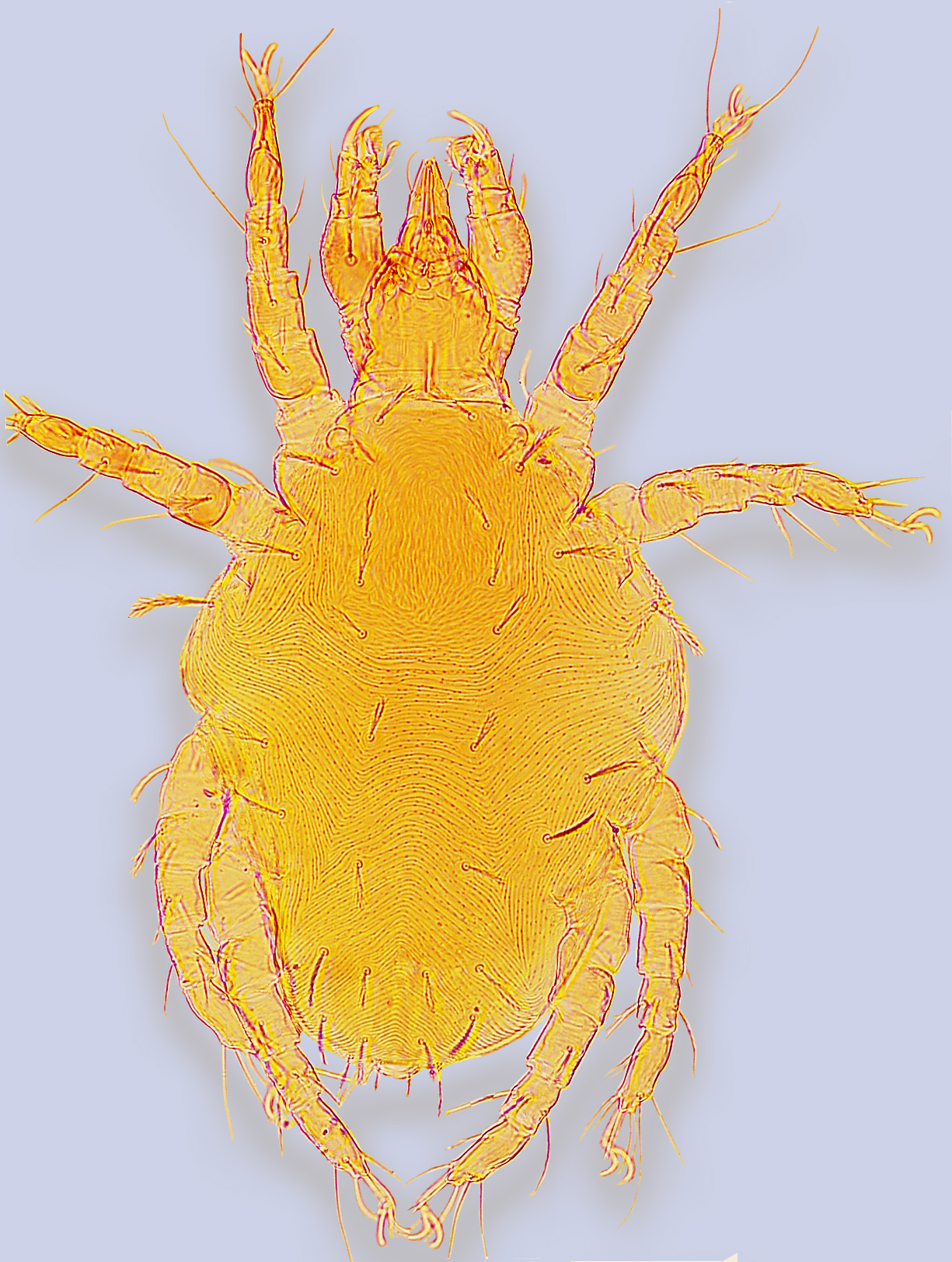Bee Mites : Acari : Acariformes : Trombidiformes : Cheyletidae
Genus Cheletophyes Oudemans, 1914
Cheletophyes Oudemans, 1914: 101 (Type species Cheletophyes vitzthumi Oudemans, 1914 by monotypy); Baker, 1949: 287 (part.); Volgin, 1969: 160; Summers and Price, 1970: 40; Fain and Bochkov, 2001a: 61; Bochkov, 2009: 84.
Cheletes: Vitzthum, 1919: 2 (part.).
Cheyletus: Baker, 1949: 275 (part.); Volgin, 1969: 73 (part.); Summers and Price, 1970: 23 (part.).
Type speices Cheletophyes vitzthumi Oudemans, 1914 by monotypy.
Material (show database records).
General Description. The genus Cheletophyes is distributed in the Oriental, Afrotropical, and Neotropical regions, with 13 species obligatory associated with large carpenter bees, genus Xylocopa (several records from other hosts are probably accidental) (Fain and Bochkov, 2001a,b; Klimov at al., 2006). All stages of these mites are predators of different microarthropods feeding on provision in the bees' nests (Eickwort, 1994). Females of Cheletophyes disperse in mesosomal acarinaria of adult bees. According to the hypothesis of OConnor (1993), the relationships between Cheletophyes and their bee hosts are mutualistic, and the bees have developed mesosomal acarinaria to transfer these predacious mites controlling nest cleptoparisites. Our study (Klimov et al., 2006) suggests that despite the fact that the mites do not directly depend on resources provided by the bees, they are highly specific to their hosts. One species, Cheletophyes panamensis, was recorded for North America (Klompen et al., 1984). This species was found in the nest of its host only. Neotropical large carpenter bees lack an acarinarium. So far, phoretic specimens of Ch. panamensis were not discovered on their host's bodies despite our significant effort to find them.
Distribution (show map).
Species included.
- Cheletophyes apicola Fain, Lukoschus and Nadchatram, 1980
- Cheletophyes clavipilis Fain, Lukoschus and Nadchatram, 1980
- Cheletophyes decorus Bochkov and Klimov, 2004
- Cheletophyes eckerti Summers and Price, 1970
- Cheletophyes indiacus Smiley and Whitaker, 1981 (=Cheletophyes xylocopae Ramaraju et Mohanasundaram, 1999)
- Cheletophyes mbomba Bochkov, Klimov and OConnor, 2006
- Cheletophyes occisor Bochkov and Klimov, 2004
- Cheletophyes panamensis Klompen, Méndez and Lukoschus, 1984
- Cheletophyes sp. Walter at al., 2002
- Cheletophyes torridae Bochkov, Klimov and OConnor, 2006
- Cheletophyes venator (Vitzthum, 1920) (=Cheletophyes aurorae Haitlinger 2000)
- Cheletophyes vespae Fain and Bochkov, 2001
References
Image Gallery
B. OConnor and P. Klimov ©
Created: April 25, 2012
Last modified: 

